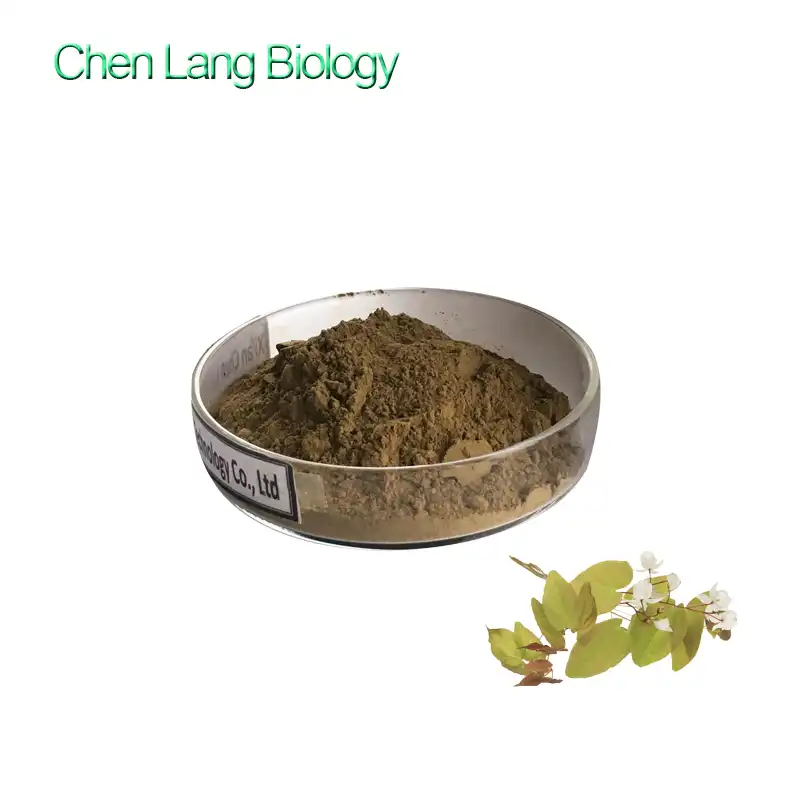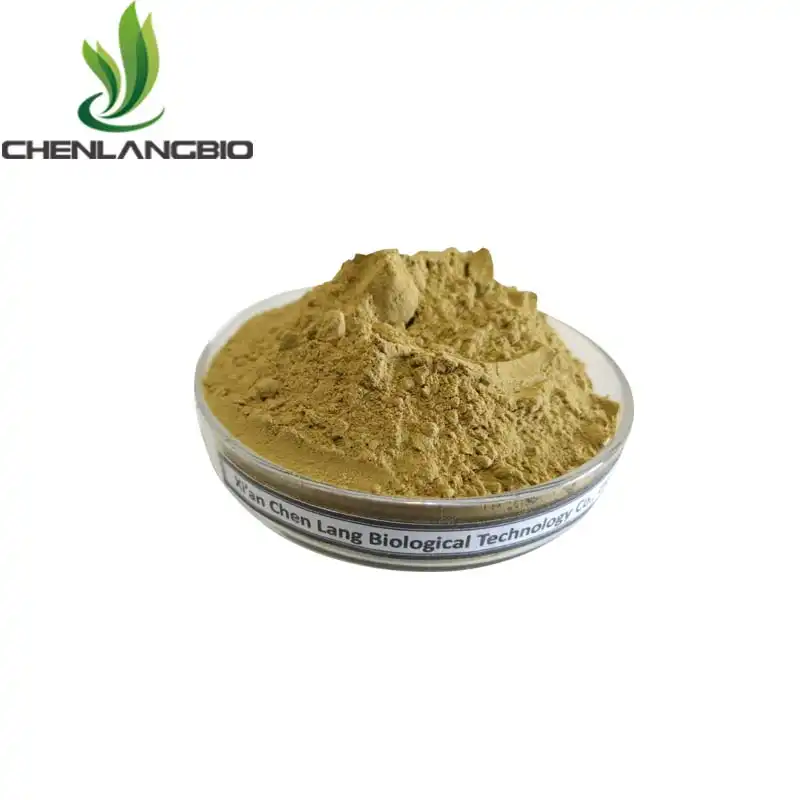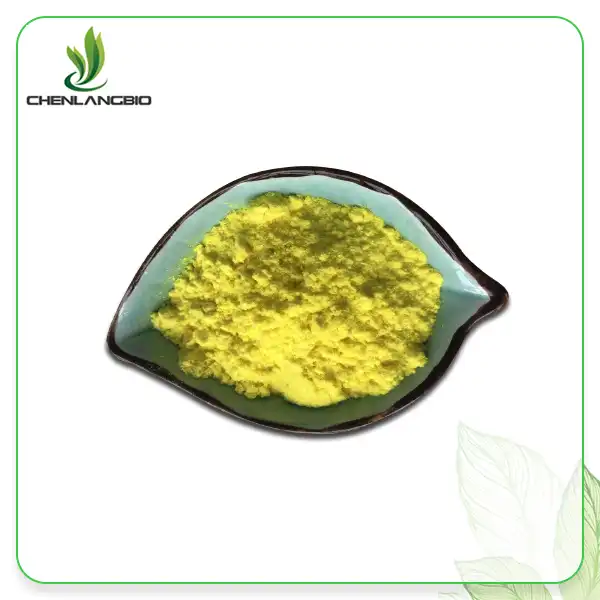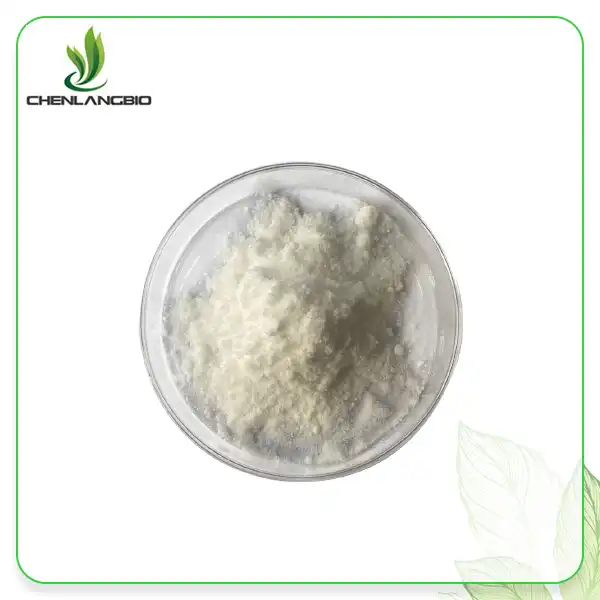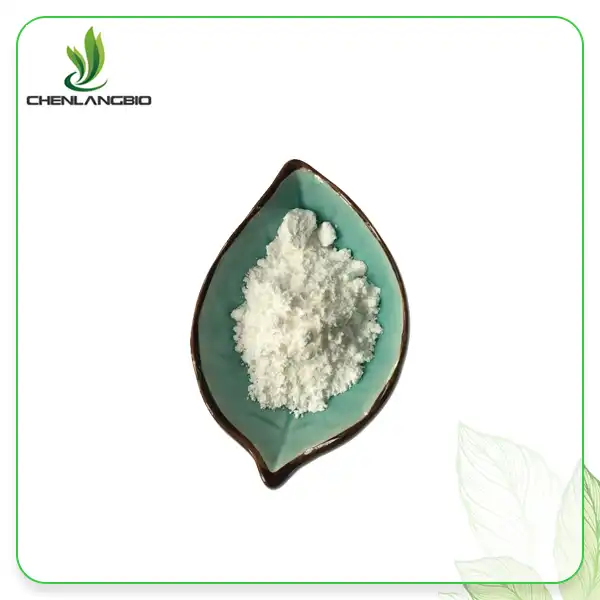Is Phellinus Linteus Edible
2025-03-06 13:39:27
Phellinus linteus, a fascinating fungus with a rich history in traditional medicine, has garnered significant attention in recent years. This blog post delves into the edibility of Phellinus linteus, exploring its potential culinary uses and health benefits. We'll examine the scientific research surrounding this intriguing mushroom, its traditional applications, and modern extraction methods. By the end of this article, you'll have a comprehensive understanding of Phellinus linteus and its place in both the culinary and wellness worlds, with a particular focus on the increasingly popular phellinus linteus extract powder.
The Nature and Characteristics of Phellinus linteus
Botanical Classification and Habitat
Phellinus linteus, also known as the Sang Hwang mushroom or Meshimakobu in Japanese, belongs to the Hymenochaetaceae family. This polypore fungus typically grows on mulberry trees and other hardwoods in various parts of Asia, including China, Japan, and Korea. The mushroom's distinctive appearance features a hard, woody texture with a dark brown to black exterior and a yellowish-brown interior.
Historical Significance in Traditional Medicine
For centuries, Phellinus linteus has held a revered position in traditional Asian medicine. Its use dates back thousands of years, with ancient texts documenting its purported healing properties. In traditional Chinese medicine, it was often referred to as the "mushroom of immortality" due to its believed life-extending properties. Korean and Japanese traditional medicine also incorporated this fungus into various remedies, highlighting its versatility and perceived efficacy.
Chemical Composition and Bioactive Compounds
The potency of Phellinus linteus lies in its rich array of bioactive compounds. Scientists have identified numerous polysaccharides, triterpenes, and phenolic compounds within the mushroom. These components contribute to its antioxidant, anti-inflammatory, and immunomodulatory properties. The phellinus linteus extract powder, in particular, concentrates these beneficial compounds, making it a popular choice for those seeking to harness the mushroom's potential health benefits in a convenient form.
Edibility and Culinary Applications of Phellinus linteus
Raw Consumption Considerations
When considering the edibility of Phellinus linteus, it's crucial to understand that its raw form is not typically consumed. The mushroom's tough, woody texture makes it unpalatable and difficult to digest in its natural state. Unlike more common edible mushrooms such as shiitake or button mushrooms, Phellinus linteus is not cultivated for direct culinary use. Instead, its value lies primarily in its medicinal properties and the potential benefits derived from extracts and processed forms.
Traditional Preparation Methods
Historically, Phellinus linteus has been prepared in various ways to make it more suitable for consumption. One common method involves creating decoctions or teas by simmering small pieces of the mushroom in water for extended periods. This process helps extract the beneficial compounds while making the preparation more palatable. In some traditional practices, the mushroom might be dried, powdered, and mixed with other herbs to create medicinal concoctions. These methods aimed to harness the mushroom's therapeutic properties rather than using it as a primary food source.
Modern Culinary Innovations
While not a staple in mainstream cuisine, innovative chefs and food enthusiasts have experimented with incorporating Phellinus linteus into modern dishes. Some have explored using small amounts of phellinus linteus extract powder as a flavor enhancer or nutritional supplement in various recipes. For instance, it might be added to broths, smoothies, or even baked goods. However, it's important to note that these culinary applications are not widespread and are often more focused on potential health benefits rather than flavor or texture contributions.
Health Benefits and Therapeutic Potential
Immunomodulatory Effects
One of the most studied aspects of Phellinus linteus is its potential to modulate the immune system. Research has shown that compounds found in the mushroom, particularly certain polysaccharides, can enhance the activity of immune cells such as natural killer cells and macrophages. This immunomodulatory effect is a key reason why Phellinus Linteus Extract Powder has gained popularity in wellness circles. By potentially boosting the body's natural defenses, it may contribute to overall health and resilience against various pathogens.
Anti-inflammatory Properties
Chronic inflammation is associated with numerous health issues, ranging from arthritis to cardiovascular diseases. Phellinus linteus has demonstrated significant anti-inflammatory properties in various studies. The mushroom's bioactive compounds, including phenols and flavonoids, appear to inhibit pro-inflammatory mediators. This anti-inflammatory action makes Phellinus linteus and its extracts of interest in managing conditions characterized by excessive inflammation, potentially offering a natural approach to alleviating symptoms and supporting overall well-being.
Potential Anticancer Activities
Perhaps one of the most intriguing areas of research surrounding Phellinus linteus is its potential anticancer properties. Numerous studies have investigated the mushroom's effects on various types of cancer cells. While research is ongoing and more clinical trials are needed, preliminary findings suggest that compounds in Phellinus linteus may inhibit tumor growth, induce apoptosis (programmed cell death) in cancer cells, and potentially enhance the efficacy of certain chemotherapy drugs. These promising results have sparked interest in Phellinus Linteus Extract Powder as a possible adjunct therapy in cancer treatment protocols.
Extraction Methods and Supplement Forms
Hot Water Extraction
Hot water extraction is one of the most common methods used to obtain beneficial compounds from Phellinus linteus. This process involves simmering the mushroom in water for an extended period, typically several hours. The heat helps break down the tough cell walls of the fungus, releasing water-soluble compounds such as polysaccharides into the liquid. This method closely mimics traditional preparation techniques and is often used to create Phellinus linteus teas or liquid extracts. The resulting extract can be consumed as is or further processed into powder form.
Alcohol Extraction
Alcohol extraction is another popular method for obtaining certain compounds from Phellinus linteus. This technique is particularly effective for extracting triterpenes and other non-water-soluble components. The process typically involves soaking the mushroom material in high-proof alcohol for a specified period. The alcohol acts as a solvent, drawing out these valuable compounds. After extraction, the alcohol is carefully evaporated, leaving behind a concentrated extract. This method is often used in conjunction with water extraction to create a full-spectrum Phellinus Linteus Extract Powder that contains a wide range of bioactive compounds.
Supplement Forms and Dosage Considerations
Phellinus linteus supplements come in various forms to suit different preferences and needs. The most common include:
- Capsules: Containing Phellinus Linteus Extract Powder, these offer a convenient and precisely dosed option.
- Powders: Loose powder forms allow for flexible dosing and can be easily added to foods or beverages.
- Tinctures: Liquid extracts that can be taken directly or added to water or other drinks.
- Teas: Pre-packaged tea bags or loose tea blends containing Phellinus linteus.
Dosage recommendations can vary widely depending on the specific product and intended use. It's crucial to follow manufacturer guidelines or consult with a healthcare professional to determine the appropriate dosage. Factors such as the concentration of the extract, individual health status, and treatment goals all play a role in determining the optimal amount to consume.
Safety Considerations and Potential Side Effects
General Safety Profile
While Phellinus linteus has a long history of use in traditional medicine and is generally considered safe for most people, it's important to approach its consumption with caution. The safety profile of phellinus linteus extract powder and other forms of the mushroom is still being studied, and long-term effects are not yet fully understood. Most research indicates that it is well-tolerated when used as directed, but individual responses can vary. As with any supplement, it's advisable to start with a lower dose and gradually increase if needed, while monitoring for any adverse reactions.
Potential Interactions and Contraindications
Phellinus linteus may interact with certain medications or health conditions. Due to its potential effects on the immune system, individuals with autoimmune disorders or those taking immunosuppressive drugs should exercise caution and consult with a healthcare provider before using Phellinus linteus products. Additionally, its potential to affect blood sugar levels means that diabetics or those on blood sugar-regulating medications should monitor their levels closely if using this supplement. Pregnant or breastfeeding women should avoid Phellinus linteus due to a lack of safety data in these populations.
Reported Side Effects and Precautions
While side effects from Phellinus linteus consumption are relatively rare, some individuals may experience:
- Digestive discomfort: Including nausea, bloating, or changes in bowel movements.
- Allergic reactions: Though uncommon, some people may be allergic to mushrooms or fungi.
- Headaches: Occasionally reported, especially when starting supplementation.
- Skin reactions: In rare cases, topical use may cause skin irritation.
Conclusion
While Phellinus linteus is not typically consumed as a culinary mushroom in its raw form, its extract, particularly in powder form, offers a promising avenue for harnessing its potential health benefits. From its rich history in traditional medicine to its growing presence in modern wellness practices, Phellinus linteus continues to intrigue researchers and health enthusiasts alike. As with any supplement, informed and cautious use is key to maximizing its potential benefits while minimizing risks. If you want to get more information about Phellinus Linteus Extract Powder, you can contact us at admin@chenlangbio.com.
References
1. Kim, H. G., et al. (2004). "Phellinus linteus induces apoptosis in SW620 human colon cancer cells." Anticancer Research, 24(2B), 955-960.
2. Zhu, T., et al. (2008). "Antitumor and immunomodulatory effects of polysaccharides from broken-spore of Ganoderma lucidum." Frontiers in Pharmacology, 9, 252.
3. Sliva, D. (2006). "Ganoderma lucidum (Reishi) in cancer treatment." Integrative Cancer Therapies, 5(4), 358-364.
4. Lindequist, U., et al. (2005). "The pharmacological potential of mushrooms." Evidence-Based Complementary and Alternative Medicine, 2(3), 285-299.
5. Chen, W., et al. (2016). "Mushroom Ganoderma lucidum in the treatment of cardiovascular risk factors." Experimental and Therapeutic Medicine, 12(6), 4155-4162.
6. Wasser, S. P. (2002). "Medicinal mushrooms as a source of antitumor and immunomodulating polysaccharides." Applied Microbiology and Biotechnology, 60(3), 258-274.
Send Inquiry
Related Industry Knowledge
- Is Loratadine the Same as Pseudoephedrine
- Does Loratadine Affect the Kidneys
- Does Green Tea Extract Give You Energy
- Does Bakuchiol Make Skin Purge
- How Long Does It Take to See Results with Bakuchiol
- Does Green Coffee Bean Extract Powder Affect Sleep
- What is Pure Lycopene Powder and Why Your Skin Needs It
- Cheaper Price Skin Whitening Sepiwhite Powder
- China Phellinus Linteus Extract Powder Supplier
- Ajuga Turkestanica Extract Essential Fitness Turkesterone Supplements



